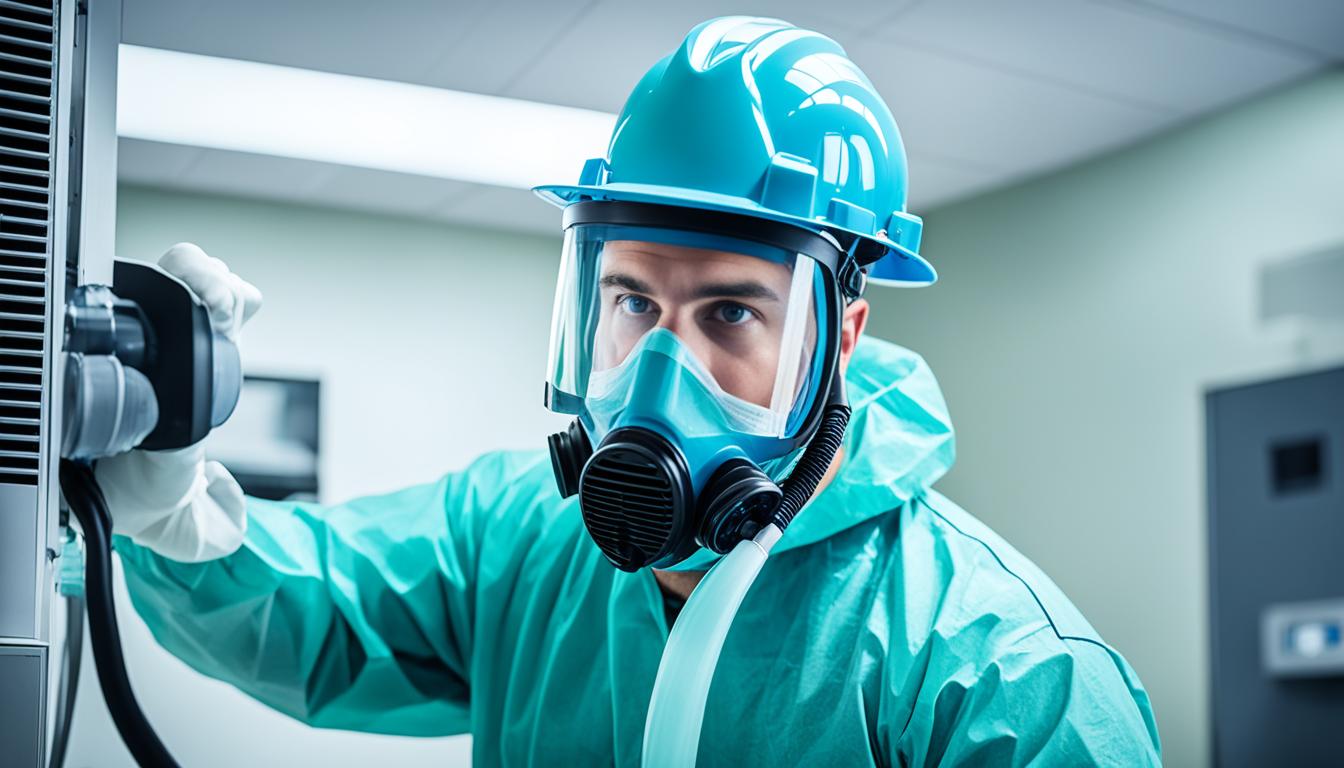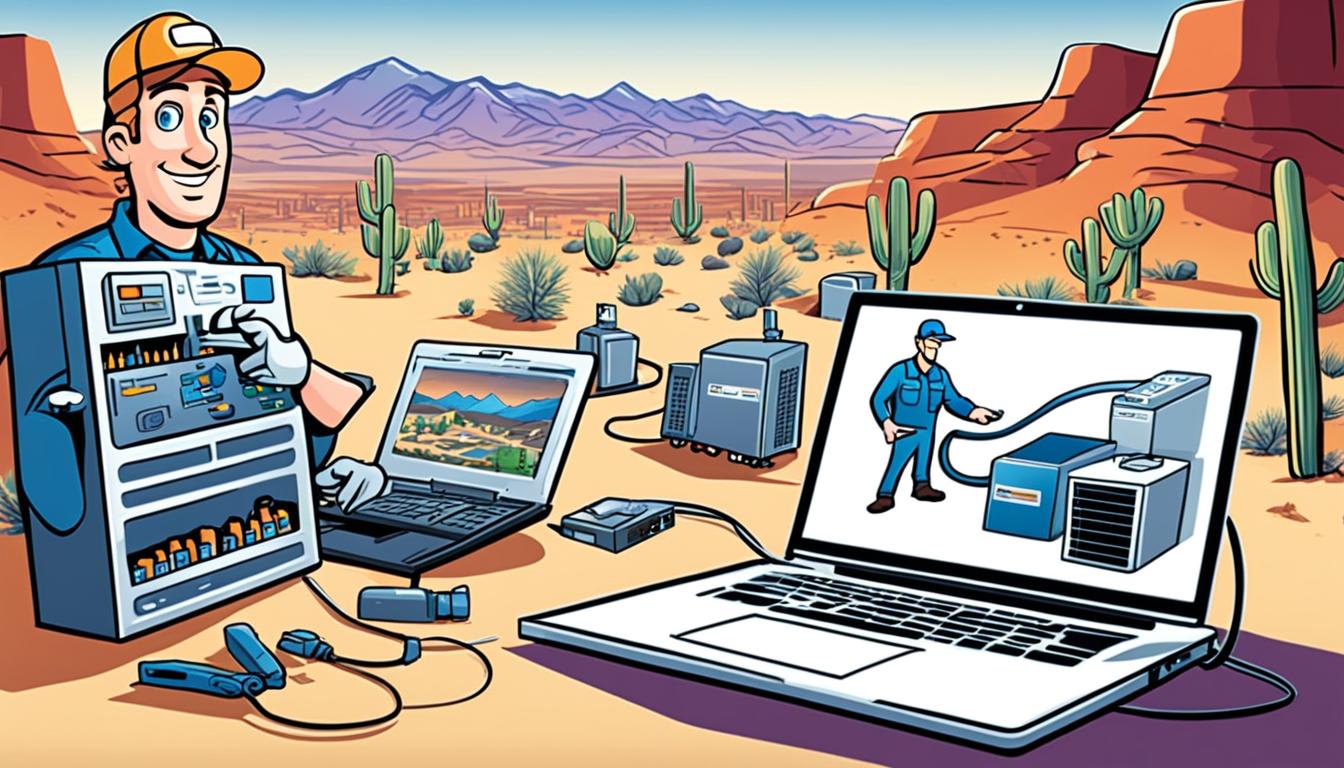Vent cleaning in healthcare facilities is a vital aspect of maintaining superior air quality and ensuring infection control. Proper maintenance and cleaning procedures are essential to ensure that ventilation systems are functioning optimally and providing a healthy environment for patients, staff, and visitors.
Regular vent cleaning helps remove contaminants such as dust, debris, and microbial growth that can accumulate over time. By eliminating these pollutants, healthcare facilities can prevent the spread of airborne infections and promote clean and healthy air within their premises.
To effectively clean vents in healthcare facilities, it is important to follow best practices and maintenance guidelines. This includes performing routine preventive maintenance on HVAC systems, sealing ductwork during renovations, and maintaining good housekeeping practices. Hiring professional duct cleaning contractors who specialize in healthcare facility cleaning is also recommended.
The benefits of proper vent cleaning in healthcare facilities go beyond air quality and infection control. It also entails improved performance and efficiency of ventilation systems, resulting in energy savings. Additionally, it prolongs the lifespan of HVAC systems, reducing maintenance and replacement costs in the long run, while ensuring compliance with regulatory standards and guidelines.
Key Takeaways:
- Regular vent cleaning is crucial for maintaining superior air quality and preventing the spread of infections in healthcare facilities.
- Best practices for vent cleaning in healthcare facilities include routine preventive maintenance, sealing ductwork, maintaining good housekeeping practices, and hiring professional duct cleaning contractors.
- Proper vent cleaning offers benefits such as enhanced indoor air quality, reduced risk of airborne infections, improved efficiency of ventilation systems, and compliance with regulatory standards.
Importance of Vent Cleaning in Healthcare Facilities
Vent cleaning plays a critical role in healthcare facilities, contributing to optimal air quality and effective infection control. Over time, ventilation systems can accumulate various contaminants, including dust, debris, and microbial growth. These substances compromise the air quality within the facility and pose health risks to patients, staff, and visitors.
To ensure clean and healthy air, regular vent cleaning is essential. By removing contaminants from the ventilation system, healthcare facilities can minimize the transmission of infections and maintain a safe environment for all occupants.
Proper vent cleaning helps prevent the spread of airborne diseases, which is especially crucial in healthcare settings where patients with compromised immune systems are present. It enhances the overall well-being of individuals within the facility, making it a crucial aspect of maintaining a healthy environment.
The Impact of Contaminants in Ventilation Systems
Over time, ventilation systems in healthcare facilities can become breeding grounds for harmful contaminants. These contaminants can originate from various sources, including dust particles, allergens, biological matter, and volatile organic compounds (VOCs).
The presence of these contaminants in the ventilation system can lead to several negative consequences:
- Compromised Air Quality: Accumulated contaminants affect the quality of the air circulating in the facility, potentially causing respiratory issues and discomfort for occupants.
- Infection Risk: Contaminated ventilation systems can contribute to the spread of infections, especially airborne diseases, among patients, staff, and visitors.
- Reduced HVAC Efficiency: Contaminants can obstruct airflow and decrease the efficiency of the heating, ventilation, and air conditioning (HVAC) system, resulting in increased energy consumption and higher utility costs.
The Benefits of Regular Vent Cleaning
Regular vent cleaning in healthcare facilities offers numerous benefits, ensuring a safer and healthier environment for all. Some key advantages include:
- Improved Air Quality: By removing contaminants from the ventilation system, air quality is enhanced, promoting the well-being of patients, staff, and visitors.
- Reduced Infection Risk: Clean vents help prevent the transmission of airborne diseases, minimizing the spread of infections within the facility.
- Enhanced HVAC Efficiency: A clean ventilation system allows air to flow freely, improving the performance and efficiency of the HVAC system. This leads to energy savings and reduced maintenance costs in the long run.
- Compliance with Standards: Regular vent cleaning ensures compliance with regulatory standards and guidelines for healthcare facility maintenance and air quality control, meeting industry requirements and expectations.
Overall, vent cleaning is an essential aspect of maintaining optimal air quality and infection control in healthcare facilities. By investing in regular cleaning and maintenance, healthcare providers can create a healthier environment for everyone within the facility.
Best Practices for Vent Cleaning in Healthcare Facilities

Ensuring clean and properly functioning ventilation systems is essential in healthcare facilities. By implementing the following best practices and maintenance guidelines, you can effectively maintain optimal air quality and minimize the risk of infections:
- Routine preventive maintenance: Perform regular maintenance on HVAC systems, including changing filters and cleaning coils. This helps remove accumulated dust, debris, and microbial growth that can compromise air quality.
- Sealing ductwork during renovations: When undergoing building renovations, ensure ductwork is properly sealed to prevent the entry of construction dust and debris. This helps maintain the cleanliness of the ventilation system.
- Good housekeeping practices: Maintain a clean and organized environment to prevent the accumulation of contaminants in occupied spaces. Regularly clean and sanitize surfaces, floors, and other areas to minimize the spread of pollutants.
- Regular ductwork inspections: Conduct periodic inspections of ductwork to assess cleanliness and identify any issues. Promptly address any problems, such as clogs or leaks, to ensure optimal performance and air quality.
- Hire professional duct cleaning contractors: When it comes to vent cleaning, healthcare facilities should rely on certified and experienced professionals. Hiring qualified duct cleaning contractors ensures that the cleaning process adheres to industry standards and guidelines.
- Building occupant safety: During vent cleaning, take necessary precautions to protect building occupants. Use containment barriers to isolate the work area and proper ventilation equipment to minimize the spread of dust and debris.
By implementing these best practices, healthcare facilities can maintain clean and healthy air, promoting a safer and more comfortable environment for patients, staff, and visitors.
The Importance of Regular Vent Cleaning
Regular vent cleaning is critical in healthcare facilities due to the unique needs and vulnerabilities of the healthcare environment. Healthcare facilities have a higher risk of airborne infections and microbial contamination, making optimal air quality essential for patient safety.
Contaminants that accumulate in ventilation systems can include dust, allergens, mold, bacteria, and viruses, among others. These contaminants can easily circulate through the facility, increasing the risk of infections and exacerbating respiratory conditions in patients and staff.
Proper vent cleaning not only improves air quality but also supports infection control efforts by minimizing the presence of contaminants. It helps create a healthier environment for patients, reduces the risk of airborne infections, and aligns with regulatory standards.
| Benefits of Best Practices for Vent Cleaning |
|---|
| Enhanced Indoor Air Quality |
| Reduced Risk of Airborne Infections |
| Improved Performance and Efficiency of Ventilation Systems |
| Prolonged Lifespan of HVAC Systems |
| Compliance with Regulatory Standards |
Vent cleaning is not just about maintaining clean air in healthcare facilities; it also offers additional benefits. By following best practices and maintenance guidelines, healthcare facilities can experience enhanced indoor air quality, reduced risk of airborne infections, improved performance and efficiency of ventilation systems, prolonged HVAC system lifespan, and compliance with regulatory standards.
Benefits of Proper Vent Cleaning in Healthcare Facilities
Proper vent cleaning in healthcare facilities brings a multitude of benefits beyond just improving air quality and infection control. By prioritizing vent cleaning, you contribute to maintaining a healthier environment for patients, staff, and visitors. Enhanced indoor air quality is crucial for promoting wellness and reducing the risk of respiratory illnesses within the facility.
Furthermore, regular vent cleaning improves the performance and efficiency of ventilation systems, resulting in energy savings. Clean vents allow air to flow freely, reducing strain on HVAC systems and potentially lowering energy consumption. This cost efficiency not only contributes to the facility’s environmental sustainability but also frees up resources that can be allocated towards other critical healthcare needs.
Proper vent cleaning also extends the lifespan of HVAC systems, minimizing maintenance and replacement costs in the long run. By removing dust, debris, and microbial growth that can compromise system integrity, you safeguard the longevity and functionality of your ventilation infrastructure. This proactive approach saves your facility from potential costly repairs and premature equipment replacements.
Moreover, adhering to vent cleaning protocols ensures compliance with regulatory standards and guidelines for healthcare facility maintenance and air quality control. Compliance is not only necessary for legal reasons but also demonstrates your commitment to prioritizing the health and safety of patients and staff. By meeting these standards, you instill confidence in your facility’s ability to provide a clean and hygienic environment for all.





0 Comments